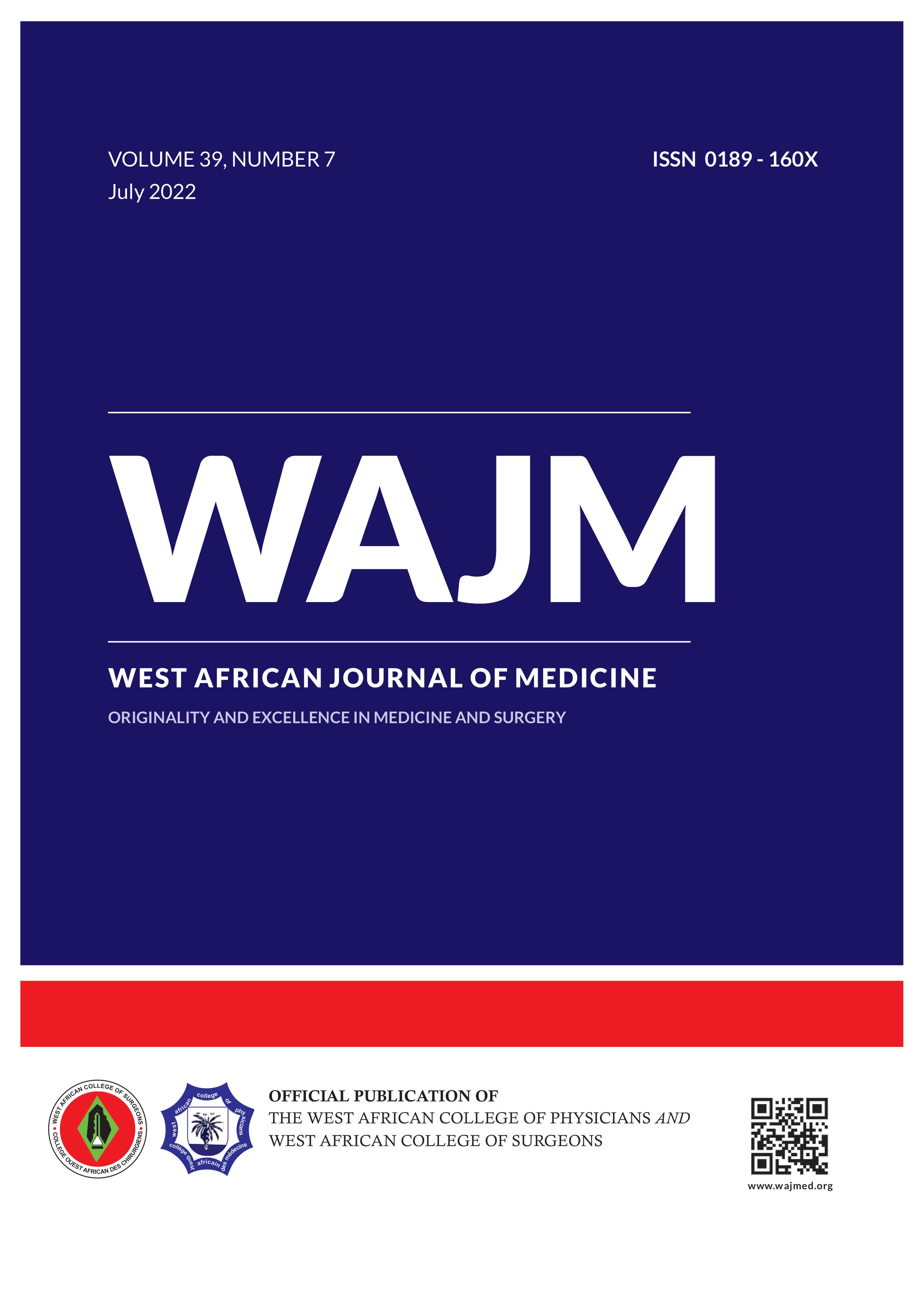ORIGINAL: Evaluation of the Prevalence and Anatomic Types of Congenital Heart Diseases: An Echocardiographic Study in a Tertiary Hospital in Nigeria
West Afr J Med . 2022 Jul 31;39(7):714-720.
Keywords:
Anatomic types; Congenital heart disease; Defect size; Echocardiography.Abstract
Abstract in English, FrenchBackground: Congenital heart diseases (CHD) are the most important congenital anomaly. The burden and types are important for health planning and preparation for surgery. This study was conducted to determine the prevalence, anatomic types and defect sizes of the CHDs seen in a tertiary hospital.
Methods: A retrospective review of echocardiographic records of children seen in a tertiary centre over a twelve-year period was conducted. Using information from the echocardiograms, the anatomic types and defect sizes of the CHDs were determined using known classifications. Statistical analysis was done using IBM-SPSS version 21.
Results: The prevalence of CHD was 10.3/1000 children with a M:F ratio of 1:1. Sixty two percent of the subjects were infants. There were more acyanotic than cyanotic CHDs (80.6% vs 19.4%). The most common types of ventricular septal defect (VSD) and atrial septal defect (ASD) were the membranous and ostium secundum types respectively. The medium sized VSD (49.0%) were in the majority while the small size patent ductus arteriosus and atrial septal defects predominated, 69.5% and 61.3% respectively.
Conclusion: The prevalence of CHD in this study was high. The large number of small sized defects of ASD and VSD allows for spontaneous closure or uncomplicated surgical repair of the defects, an advantage in a setting with poor access to heart surgery.
Keywords: Anatomic types; Congenital heart disease; Defect size; Echocardiography.


